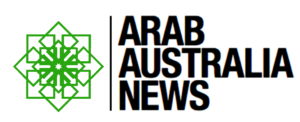The Australian dollar fell slightly to 68.65 US cents in the wake of the Saudi drone attacks. These attacks on the world’s biggest crude exporter initially sent oil prices up more than 20 per cent before they eased as various nations said they would tap emergency reserves to ensure stable supplies.
Market snapshot at 7:40am (AEST):
- ASX SPI futures -0.2pc at 6,661, ASX 200 (Monday’s close) +0.1pc at 6,674
- AUD: 68.62 US cents, 55.22 British pence, 62.38 euro cents, 74.19 Japanese yen, $NZ1.08
- US: Dow Jones -0.5pc at 27077, S&P 500 -0.3pc at 2,998, Nasdaq -0.3px at 8,154
- Europe: FTSE 100 -0.6pc at 7,321, DAX -0.7pc at 12,380, CAC -0.9pc at 5,602, Euro Stoxx 50 -0.9pc at 3,518
- Commodities: Brent crude +13pc at $US68.07/barrel, spot gold +0.6pc at $US1,498/ounce, iron ore -0.1pc at $US98.45/tonne
The increase in Australia’s LNG [liquefied natural gas] exports, the Australian dollar appears to be showing a little bit of resilience to the move higher in oil prices. But according to some financial sources “… if the surge in oil prices becomes sustainable, hampering an already subdued global growth performance, then it will be difficult to see the Australian dollar retaining its resilience.”
Energy stocks across global markets benefited from a massive increase to their share price, but nearly all other sectors finished in the red.
On Wall Street, the Dow Jones index lost 142 points, or 0.5 per cent, to 27,077.
The benchmark S&P 500 and tech-heavy Nasdaq indices both closed 0.3 per cent lower.
The losses were even steeper in Europe, with London’s FTSE and Germany’s DAX losing more than 0.6 per cent each.
With investors feeling increasingly nervous, they piled into safe haven assets — driving the price of spot gold up 0.7 per cent to $US1,499 an ounce.










